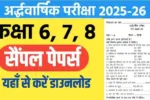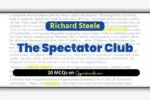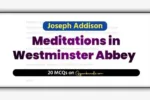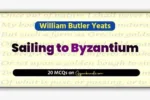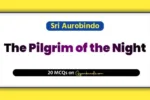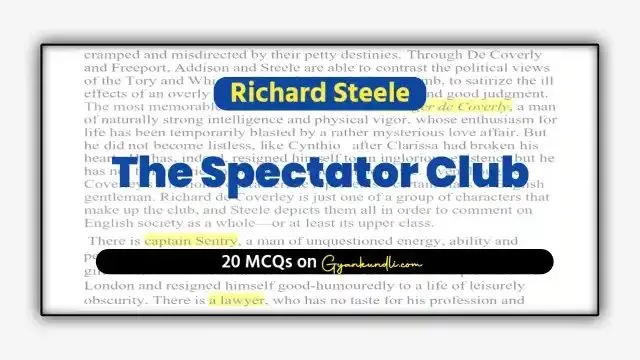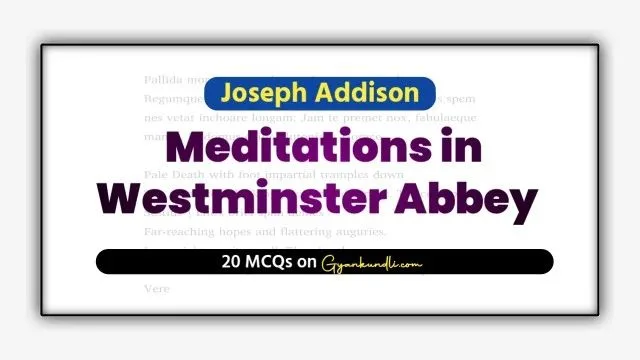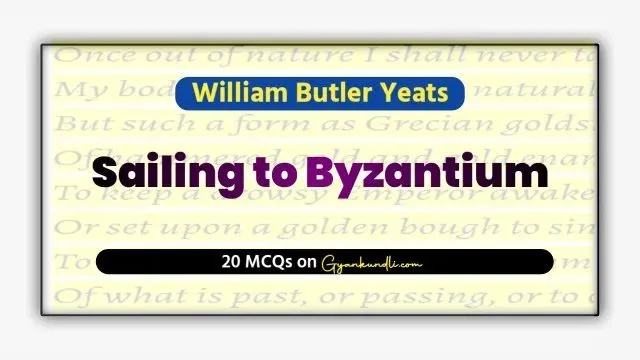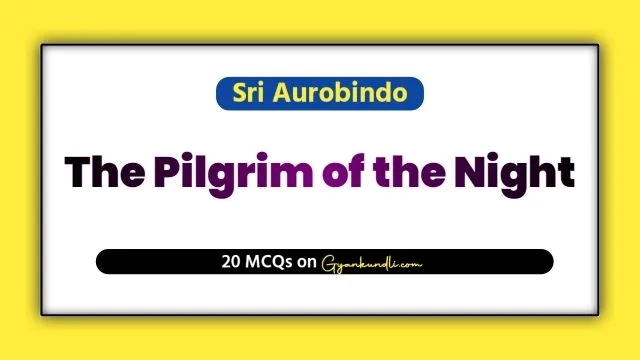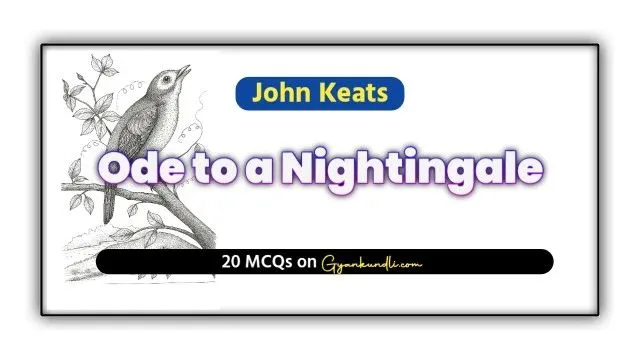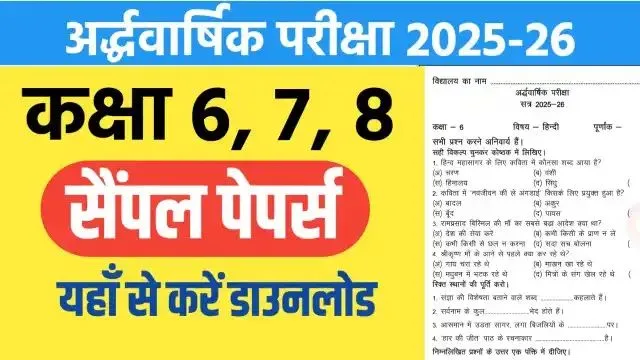Satire 30 MCQs with Answers : Satire is one of the most powerful literary devices used by writers to expose human follies, social evils, and political corruption. The word satire comes from the Latin word satura, which means “medley” or “mixture.” In literature, satire is not simply about laughter; it is a tool that blends humour, irony, exaggeration, and ridicule to correct the faults of individuals and society.
From the times of ancient Greece and Rome, satire has been a part of literature. Roman writers like Horace, Juvenal, and Persius made satire a recognised genre. Horace used a gentle and humorous tone, while Juvenal employed sharp criticism to highlight moral decay. Later, English writers such as Geoffrey Chaucer, Jonathan Swift, and Alexander Pope carried this tradition forward with remarkable skill. Swift’s Gulliver’s Travels and Pope’s The Rape of the Lock are fine examples of satire in English literature.
The beauty of satire lies in its double purpose—to entertain and to reform. While readers laugh at the ridiculous situations or characters, they are also reminded of deeper truths. Satire may appear in poetry, prose, drama, or even modern media, but its central aim remains the same: to make people reflect on their actions and improve.
In modern times, satire is also visible in newspapers, cartoons, films, and online platforms. This shows that satire continues to be relevant in questioning authority and raising awareness. By mixing wit with wisdom, satire keeps literature alive, thought-provoking, and socially meaningful.
Introduction to Satire 30 MCQs with Answers
To help students and competitive exam aspirants, we have prepared 30 Multiple Choice Questions (MCQs) on Satire. These questions are designed to test your knowledge of the origin, definition, types, and famous examples of satire. The set follows the style of RPSC and other teaching exams. Each question is followed by its correct answer so that you can revise effectively and strengthen your preparation.
1. The word “satire” is derived from the Latin word satura, which originally meant:
A) Criticism
B) Full ✅
C) Sharpness
D) Laughter
2. The term lanx satura referred to:
A) A satire on Roman politicians
B) A dish of mixed fruits ✅
C) A Roman comedy play
D) A form of Roman poetry
3. Which type of satire is described as light-hearted and good-natured?
A) Menippean
B) Ironic
C) Juvenalian
D) Horatian ✅
4. Alexander Pope’s The Rape of the Lock is an example of:
A) Political satire
B) Juvenalian satire
C) Horatian satire ✅
D) Menippean satire
5. The main purpose of Horatian satire is:
A) To glorify the state
B) To provoke laughter and moral improvement ✅
C) To condemn and punish
D) To create terror and fear
6. Which type of satire is more bitter and dark in tone?
A) Juvenalian ✅
B) Horatian
C) Classical
D) Menippean
7. Jonathan Swift’s A Modest Proposal is an example of:
A) Juvenalian satire ✅
B) Horatian satire
C) Romantic satire
D) Menippean satire
8. Menippean satire is characterized by:
A) Bitter attack
B) Good-natured ridicule
C) Direct political critique
D) Encyclopedic digressions and mockery ✅
9. The Augustan Age in England is especially known for the flowering of satire. Which pair best represents that tradition?
A) Spenser & Sidney
B) Wordsworth & Coleridge
C) Tennyson & Browning
D) Dryden & Pope ✅
10. Horatian satire is typically:
A) Gentle, urbane, amused ✅
B) Solely political
C) Melodramatic and tragic
D) Bitter and denunciatory
11. Juvenalian satire is best described as:
A) Solely allegorical
B) Farce without critique
C) Light mockery for entertainment
D) Biting moral outrage seeking reform ✅
12. Menippean satire chiefly targets:
A) Only religious hypocrisy
B) Mental attitudes/ideas across society ✅
C) Meter and rhyme schemes
D) A single public figure
13. The Rape of the Lock is a:
A) Mock-epic (heroic couplets) gently satirizing aristocratic vanity ✅
B) Dramatic monologue
C) Pure epic
D) Morality play
14. In Mac Flecknoe, Dryden satirically crowns whom as the prince of dullness?
A) Colley Cibber
B) Richard Flecknoe
C) Lewis Theobald
D) Thomas Shadwell ✅
15. The Dunciad (revised) ultimately elevates which figure as the hero of Dulness?
A) Lewis Theobald
B) Edward Young
C) John Dennis
D) Colley Cibber ✅
16. Hudibras by Samuel Butler chiefly satirizes:
A) Puritan zeal and hypocrisy ✅
B) Courtly love conventions
C) Metaphysical wit
D) Classical epic decorum
17. Absalom and Achitophel is:
A) A travel satire on Laputa
B) A pastoral eclogue
C) A political satire on the Exclusion Crisis (1681) ✅
D) A closet drama
18. A Modest Proposal (1729) satirically suggests:
A) Colonizing Laputa
B) Abolishing tithes
C) Selling Irish children as food ✅
D) Closing Irish monasteries
19. Gulliver’s Travels is often classed as:
A) Menippean satire blending travel parody and social critique ✅
B) Closet drama in blank verse
C) Picaresque romance only
D) Domestic realism
20. The phrase “bread and circuses” comes from a classical satirist. Identify him:
A) Horace
B) Persius
C) Juvenal ✅
D) Martial
21. In Volpone, Ben Jonson satirizes primarily:
A) Gothic superstition
B) Avarice/greed in a mercantile society ✅
C) Courtly love
D) Chivalry
22. Lord Byron’s The Vision of Judgment (1822) is a satirical counter to:
A) Johnson’s The Vanity of Human Wishes
B) Southey’s panegyric on George III ✅
C) Defoe’s Robinson Crusoe
D) Pope’s Rape of the Lock
23. The stanza form most associated with Byron’s comic-satiric narratives (Beppo, Don Juan) is:
A) Terza rima
B) Ballad meter
C) Ottava rima ✅
D) Spenserian stanza
24. Voltaire’s Candide (1759) primarily satirizes:
A) Neoclassical tragedy
B) Newtonian science
C) Leibnizian philosophical optimism ✅
D) Aristotelian poetics
25. According to standard reference definitions, satire customarily employs which techniques?
A) Solemn invocation and epic simile only
B) Stream of consciousness exclusively
C) Free indirect discourse exclusively
D) Ridicule, irony, parody, caricature to censure vice/folly ✅
26. Which work below is NOT primarily satirical?
A) Volpone
B) The Dunciad
C) The Alchemist
D) The Rime of the Ancient Mariner ✅
27. Horatian vs Juvenalian: Which pairing is correct?
A) Horatian—gentle amusement; Juvenalian—harsh denunciation ✅
B) Horatian—indignant; Juvenalian—playful
C) Horatian—tragic; Juvenalian—epic
D) Horatian—epic; Juvenalian—lyric
28. A hallmark of Menippean satire in English before Swift includes:
A) Heroic couplets exclusively
B) Pastoral dialogues only
C) Heavy blank verse tragedies
D) Mixed prose and verse, digressions, idea-centered critique ✅
29. Which Dryden work lampoons literary pretension via mock-heroic coronation?
A) Mac Flecknoe ✅
B) Religio Laici
C) Annus Mirabilis
D) Alexander’s Feast
30. In the first edition of The Dunciad, the “prince of Dulness” was:
A) Colley Cibber
B) Richard Blackmore
C) John Dennis
D) Lewis Theobald ✅
Discover more from Gyankundli
Subscribe to get the latest posts sent to your email.

